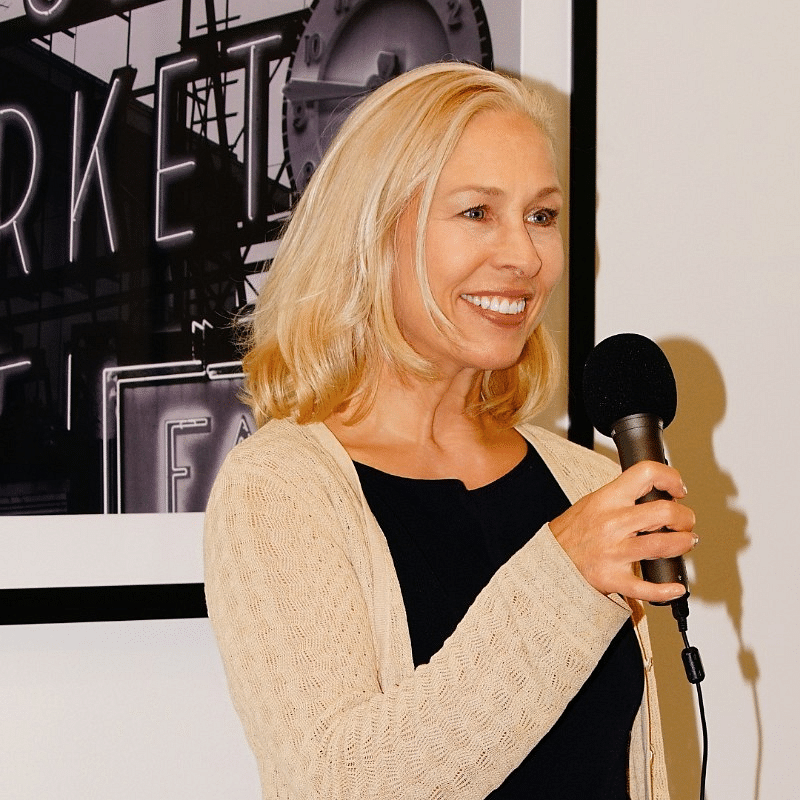
Changing business directions? Here’s how you can ‘pivot to clarity’ and do it successfully.
By Jim James, Founder EASTWEST PR and Host of The UnNoticed Entrepreneur.
Lori Michele Leavitt is known as “The Pivot Catalyst.” She is the President and Founder of Abrige Corp. and she has authored a new book called “Pivot to Clarity.” In the latest episode of The UnNoticed Entrepreneur, she talked about the common mistakes entrepreneurs do when changing directions and how they can keep the alignment among themselves, their teams, and customers if and when they pivot their business.
Image from LinkedIn
On Getting Clear
Lori wrote her new book because she knows how having clarity is important, especially after the pandemic. It’s also key in pivoting an organisation in general. Pivoting is when a leader orchestrates many changes, involving many people, over time.
In order to be clear, you need to take the time to be clear. If you’re a leader, you need to overcome many stumbling blocks so you can communicate with others, gain their commitment, and hopefully inspire them.
Though some entrepreneurs are already clear about changing business directions, they struggle with communicating with their team members. For you to communicate a change in direction, you should be clear and inspired. If you’re not inspired, you cannot inspire others. If you thought of something that you need someone else to do — and you’re not putting yourself as part of it — then it’s not going to land.
Image from Amazon
Strategic Thinking and Planning
Having spent time with different leadership teams and helping them with strategic planning, Lori found out that many people seldomly allow themselves the time for awe --to get inspired about a big idea.
However, spending time with what she calls “strategic thinking” is necessary. By simply allowing yourself to be in awe, you can interrupt all these thoughts that come through your head. We’ve tried that before. We can’t do that. I can’t bring that to the senior leadership team.
After that, you can then move on to execution planning, wherein you’re thinking about, This is what we need to do. This is how we’re going to do it. This is who’s going to do it.
Once you're clear for yourself, you have to be clear for others. You need to be so clear and be able to inspire commitment to the point that you won't need to seek buy-in from your team.
The Need to Change
People commit to the “why” of a company. And through a pivot, you’re essentially having a desired future state, a bigger vision. For instance, Starbucks might have started with a cup of coffee. Now, they’re changing the world. They’re an example of how visions grow over time.
Nonetheless, the purpose — why you exist — rarely changes.
A change often only happens when you’re going into a new line of business. It could also be prompted by changes in the industry. For the companies that will be affected by those changes, their original business model will cease to exist, and they’d have to pivot.
For instance, when the Health Insurance Portability and Accountability Act (HIPAA) was introduced in the US, many healthcare organisations had to change.
Though it didn’t change how they’d get their revenue streams, the privacy and security regulation had an impact on how they would be attracting people into their organisation and their cost of contracting. It was an enterprise-wide change. They had to change the way they communicated — both internally and externally. And they needed to do it within a tight timeline because there was a compliance deadline (which was two years).
All of the organisations came up with their own policies and procedures which may or may not have aligned with the new regulation.
Image from Unsplash
During that time, Lori worked in that space and witnessed how many of those organisations were reaching out to medical records specialists because there was a concern about protected healthcare information.
Drawing from that experience, her first advice when it comes to pivoting is to look at who you need input from and who you’re getting advice from. Also, identify if that is actually going to help your organisation go through such a significant change.
Apart from medical records experts, those healthcare organisations also reached out to attorneys because there were policies and rules. However, neither of these two professions understood that there was an opportunity to improve the organisations’ performance while pivoting.
Lori stepped in and did consulting work for these organisations. She also developed software that would help them discover — and close — the gaps that they had between where they were and where they needed to be. The software that she and her team use internally is called “Discovery” (however, it’s not yet publicly available).
Aligned Momentum
Currently, Lori is focused on helping clients gain alignment and momentum. Her company has a piece of software called “Aligned Momentum,” which is centred on managing work — not people. Because they believe that people have to be led and not managed.
In many organisations, managers are given tools and are asked and expected to lead. Yet, they don’t have a system to help them lead and create a rhythm of leadership.
This is where their software comes in. It’s designed to assist with strategy, workplace assessments, reviews, and conversations — everything that helps anyone who makes decisions about others lead better.
Screengrab from Aligned Momentum
Stages to Achieve Change
Before organisations could feel that they’ll be able to naturally change, they have to go through different stages.
First, your culture needs to be a safe place. Every person in the organisation needs to know and absolutely feel that their manager has their back and wants them to be successful. If you don't have that yet, you have to start there.
The next stage is clarity. Are you able to communicate clearly throughout the organisation? This is what Lori talks about in her book, “Pivot to Clarity.”
The succeeding stages are about focusing and context within the organisation.
Image from Unsplash
Osmo Wiio, a Scandinavian professor, has the so-called “Wiio’s Laws of Communication.” And he talked about how there’s filtering that goes on as we communicate — lots of other people in the value chain will have their own filters, and it’s why communication usually fails. How then can an organisation generate clarity at each individual level or team member?
The key is to know which stage they’re in.
If they're at a stage where they are ready for clarity, next find out how information flows. Is how the communication flowing creating momentum towards their vision? Is it aligned with the purpose and values that they have? If it’s not, then you have to address it. The specifics will come much later.
An Example of What Won’t Inspire Others
Growing up in the financial world, Lori has done a lot of strategic plans and budgets. One thing that she found is that decision-makers spend a lot of time coming up with a strategic plan that includes things that cannot be measured in financial statements.
On top of it, they don’t share those in any meaningful way with anyone. They simply place those into accounting and into their budget, and that’s what their people get.
If you think about it — have you ever been inspired by a budget? Typically, people are inspired by a purpose and emotional responses that they’re going to get as a result of what they’re going to do. The budget and the money only come afterwards.
But to address what could be a disconnect with venture capitalists or other shareholders who are ultimately focused on money, Lori recommends doing strategy-sharing. This isn't about consensus. It’s about helping them understand what your priority strategic objectives are and what those objectives can affect. And the impact is going to be different for customer service, marketing, finance, administration, sales, and operations. Everybody's going to be doing different things that align with those strategic objectives.
When Communications Won’t Land Well
In one of the chapters of her book, Lori talked about hope and fear.
Hope is an opener. If you are communicating your vision and your direction — and it sounds good — then you can open the door and give them hope that what's coming next is going to be better for who you’re communicating with.
Despite that, fear could still exist. And fear, according to her, is a closer. Fear closes that door so fast that you can hardly imagine it.
What she does is work with leaders and help them understand their fears. To get into that conversation, she needs to gain their trust first. It could be done with one-on-ones and then with a group (It really depends on what the dynamics are within an organisation).
Image from Unsplash
A big fear among leadership teams is the fear of looking stupid. There are also fears of conflict and being blamed. And there are ways that you can mitigate those fears once you understand how it happens for you and what words within your conversations are typically bringing up those fears.
When communicating, Lori’s primary recommendation is to get to the point up front. Don't go into telling a long story, because while you're doing that, the other person could be fearing for the worst.
Getting Her Brand Noticed
One way Lori gets herself noticed is by speaking. If you're speaking, even if it's a workshop or in a breakout room, you can get noticed. When things got restricted because of the pandemic, she also went into doing podcasts. For her, having a conversation with others is really inspiring.
Apart from speaking and podcasting, she’s also active on LinkedIn, making connections with mostly thought leaders.
In navigating social media, she’s all about being her authentic self. You won’t be seeing her dancing on the screen. Her strategy is to always be asking: Where is my audience, and how can I serve them best?
This article is based on a transcript from my podcast The UnNoticed Entrepreneur, you can listen here.
Cover image by Arturo Castaneyra on Unsplash







